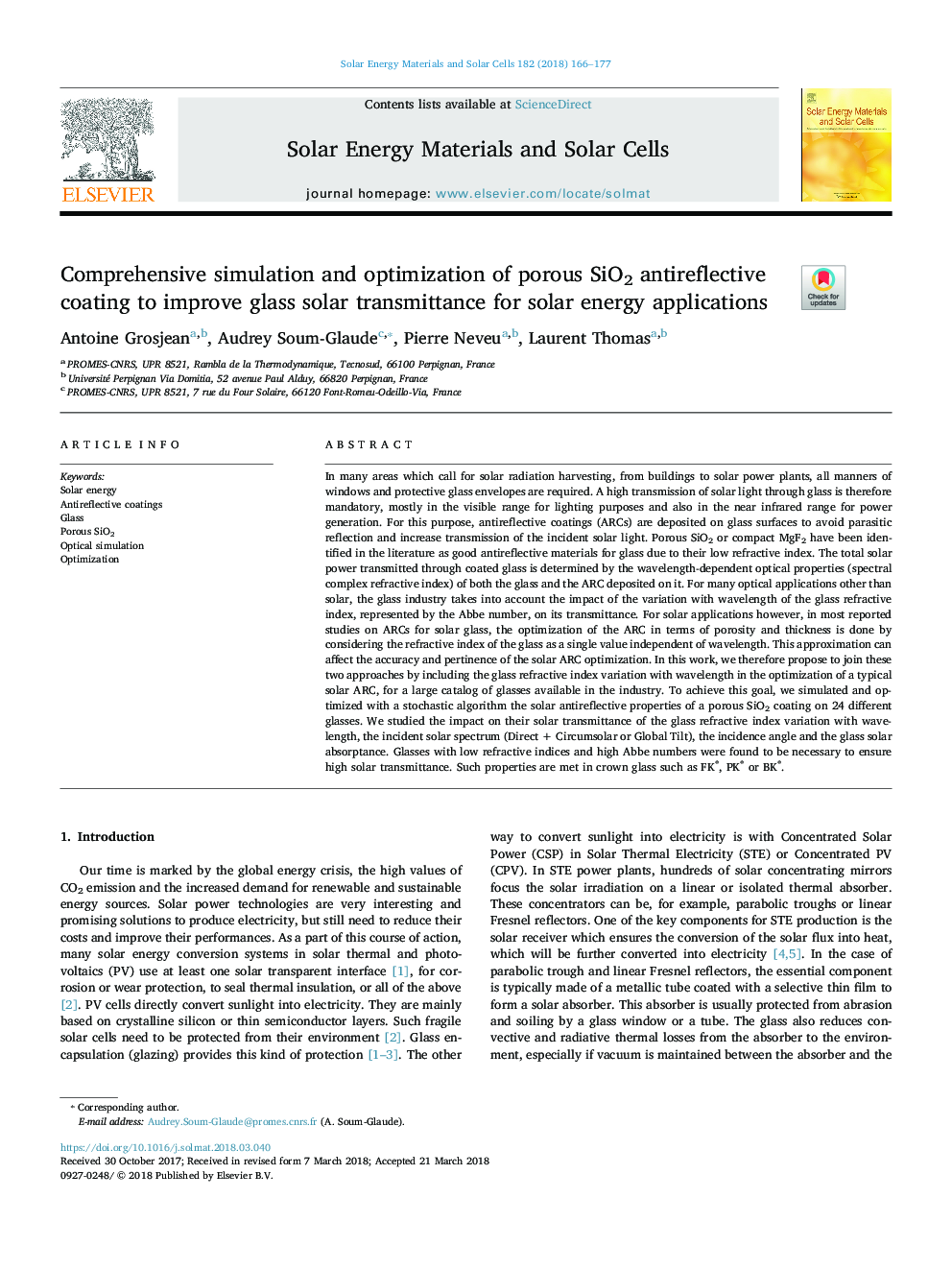| Article ID | Journal | Published Year | Pages | File Type |
|---|---|---|---|---|
| 6534130 | Solar Energy Materials and Solar Cells | 2018 | 12 Pages |
Abstract
In many areas which call for solar radiation harvesting, from buildings to solar power plants, all manners of windows and protective glass envelopes are required. A high transmission of solar light through glass is therefore mandatory, mostly in the visible range for lighting purposes and also in the near infrared range for power generation. For this purpose, antireflective coatings (ARCs) are deposited on glass surfaces to avoid parasitic reflection and increase transmission of the incident solar light. Porous SiO2 or compact MgF2 have been identified in the literature as good antireflective materials for glass due to their low refractive index. The total solar power transmitted through coated glass is determined by the wavelength-dependent optical properties (spectral complex refractive index) of both the glass and the ARC deposited on it. For many optical applications other than solar, the glass industry takes into account the impact of the variation with wavelength of the glass refractive index, represented by the Abbe number, on its transmittance. For solar applications however, in most reported studies on ARCs for solar glass, the optimization of the ARC in terms of porosity and thickness is done by considering the refractive index of the glass as a single value independent of wavelength. This approximation can affect the accuracy and pertinence of the solar ARC optimization. In this work, we therefore propose to join these two approaches by including the glass refractive index variation with wavelength in the optimization of a typical solar ARC, for a large catalog of glasses available in the industry. To achieve this goal, we simulated and optimized with a stochastic algorithm the solar antireflective properties of a porous SiO2 coating on 24 different glasses. We studied the impact on their solar transmittance of the glass refractive index variation with wavelength, the incident solar spectrum (Direct + Circumsolar or Global Tilt), the incidence angle and the glass solar absorptance. Glasses with low refractive indices and high Abbe numbers were found to be necessary to ensure high solar transmittance. Such properties are met in crown glass such as FK®, PK® or BK®.
Related Topics
Physical Sciences and Engineering
Chemical Engineering
Catalysis
Authors
Antoine Grosjean, Audrey Soum-Glaude, Pierre Neveu, Laurent Thomas,
